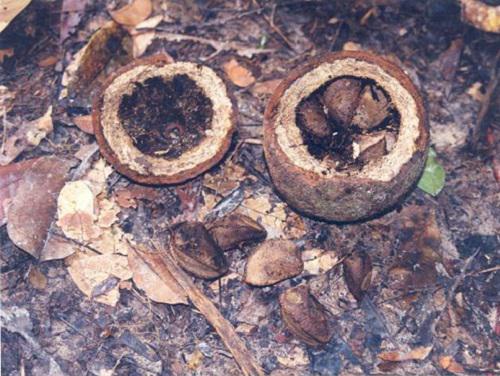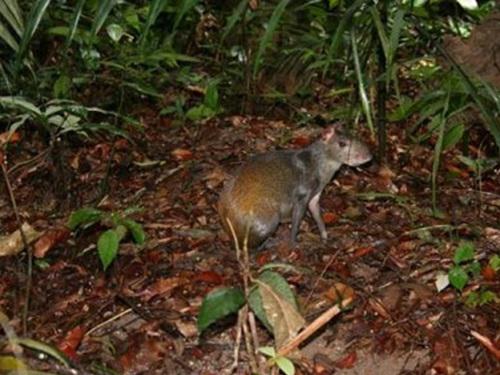Torbjørn Haugaasen
Other projects
19 Dec 2007
Nutty Livelihoods: Efforts to Save Rural Incomes and a Crucial Extractive Industry in the Amazon I
The current project proposes to further investigate the reasons for the declines seen in fruit production, experimentally test enrichment planting as a viable management option and construct a Brazil nut nursery. We also aim to perform an extensive socio-economic analysis of the harvest and trade in the study region.

Brazil nut fruit with nuts.
The Brazil nut tree (Bertholletia excelsa) is a long-lived and widespread emergent tree in lowland Amazonian forests and provides one of the most socio-economically important non-timber tropical forest products – the Brazil nut. However, despite its economic importance we know relatively little about the ecology and biology of this species under natural conditions and the impacts of human exploitation on population dynamics and recruitment. Additionally, according to local Brazil nut collectors, the production of seeds by the Brazil nut tree is declining. This project addresses a number of these questions using a combination of direct observations, field experiments and laboratory analysis.

Agouti.
Major aims of this study include:
a) Investigate in detail the pollination of the Brazil nut tree using classic pollination experiments and genetic analysis;
b) Experimentally test enrichment planting as a viable management option and construct a Brazil nut nursery;
c) Perform a socio-economic investigation of the Brazil nut harvest to evaluate forest use and harvest cost-benefit ratios.
Investigating the pollination mechanisms may help determine the cause of declining seed crops, and enhancing the regeneration of Brazil nut trees through planting of seedlings from a nursery could offset the decline by increasing the number of fruit-producing trees in the long term. Our socio-economic analysis will aid the production of an optimal harvest scenario and evaluate the impact of a new regional nut processing plant on the incomes of local harvesters.
The study will take place at Lago Uauaçú (a large crescent-shaped black-water lake) which is located in the lower Rio Purús region of central-western Brazilian Amazonia, about 350 km southwest of Manaus. The Uauaçú area presents a unique place in which to study Brazil nuts on a large scale as it contains a mosaic of natural Brazil nut stands of varying harvest histories.